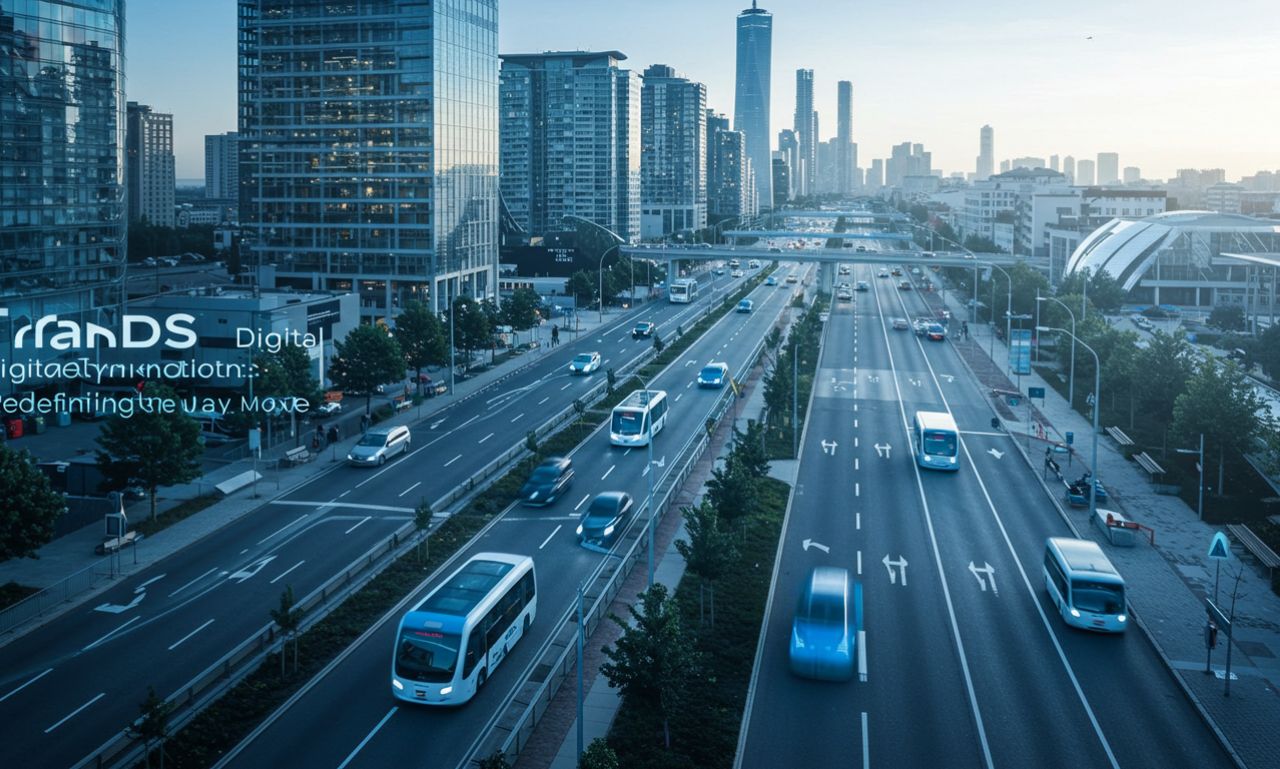TransDS digital transportation is an advanced solution that integrates real-time data, automation, and smart mobility systems to make travel more efficient, safe, and sustainable. In a rapidly evolving urban landscape, transportation systems need to keep pace with growing demands for speed, convenience, and environmental responsibility. TransDS offers a platform that meets these needs by combining the latest in technology with user-focused design.
From passenger transit to freight logistics, TransDS streamlines operations and improves decision-making by providing accurate, up-to-the-second information. This results in faster journeys, reduced fuel consumption, and better resource management.
The Vision of TransDS Digital Transportation
The mission of TransDS is to create a seamless, interconnected transportation network that benefits both operators and passengers. Its vision includes:
-
Real-time visibility – Offering precise tracking for vehicles, cargo, and passengers.
-
Automation – Reducing manual processes to save time and improve accuracy.
-
Sustainability – Lowering emissions through optimized routes and energy-efficient systems.
By integrating these goals, TransDS aims to improve the quality of transportation services while reducing their environmental impact.
Core Features of TransDS Digital Transportation
TransDS offers a range of features that make it a comprehensive mobility solution:
1. Fleet Management – Centralized control of vehicle locations, schedules, and maintenance records.
2. Route Optimization – AI-powered algorithms that select the most efficient paths, cutting fuel costs and travel time.
3. Real-Time Tracking – GPS and sensor integration provide live updates to both operators and passengers.
4. Data Analytics – Detailed performance reports help operators identify trends, inefficiencies, and opportunities for improvement.
5. Passenger Information Systems – Dynamic displays and mobile notifications keep travelers informed about schedules and delays.
How TransDS Improves Public Transit
Public transportation systems face constant challenges with timeliness, overcrowding, and passenger satisfaction. TransDS digital transportation addresses these issues by:
-
Synchronizing timetables across multiple routes.
-
Providing live updates via mobile apps.
-
Adjusting vehicle deployment based on passenger demand.
By doing so, it not only improves operational efficiency but also enhances the user experience.
TransDS in Logistics and Freight Management
For logistics providers, TransDS offers an end-to-end digital transportation solution that simplifies supply chain operations. Benefits include:
-
Tracking shipments from origin to destination.
-
Monitoring vehicle conditions to prevent breakdowns.
-
Automating documentation for faster customs clearance.
This level of control ensures goods arrive on time and in perfect condition, improving customer satisfaction and reducing operational costs.
Sustainability and Green Mobility in TransDS Digital Transportation
Environmental sustainability is at the heart of TransDS’s design. The system helps reduce the carbon footprint of transportation networks through:
-
Optimized routing that cuts unnecessary mileage.
-
Integration with electric and hybrid vehicles.
-
Data-driven fuel management strategies.
By promoting cleaner, more efficient mobility, TransDS supports both corporate and municipal sustainability goals.
Integration with Smart City Infrastructure
TransDS digital transportation is built to work within the broader smart city ecosystem. It integrates with:
-
Traffic management systems to ease congestion.
-
Smart traffic lights that adapt in real time.
-
Shared mobility services like e-bikes and ride-sharing platforms.
This interconnected approach ensures transportation is part of a holistic urban solution.
The Role of AI and IoT
Artificial intelligence (AI) and the Internet of Things (IoT) are key drivers behind TransDS’s effectiveness.
-
AI enables predictive maintenance, anticipating issues before they cause delays.
-
IoT devices collect and transmit live vehicle and environmental data.
Together, these technologies allow for rapid adjustments to operations and a more responsive transportation network.
Security and Data Privacy in TransDS Digital Transportation
With so much data flowing through the system, security is a top priority. TransDS employs:
-
End-to-end encryption for all data transmissions.
-
Role-based access controls for system administrators.
-
Compliance with global data protection standards.
This ensures that sensitive information, such as passenger records and cargo details, remains safe from unauthorized access.
The Future Digital Transportation
Looking ahead, TransDS plans to integrate autonomous vehicle management, blockchain for secure transaction records, and advanced AR-based navigation tools. These innovations will further enhance the accuracy, safety, and efficiency of the system.
By embracing new technologies while maintaining its focus on sustainability and user experience, TransDS is positioned to lead the next wave of transportation transformation.
Why it Stands Out
Unlike traditional transportation management software, TransDS offers a unified platform that serves both public transit and private logistics with equal efficiency. Its adaptability, scalability, and integration capabilities make it ideal for cities, corporations, and service providers looking to modernize their operations.
Conclusion
TransDS digital transportation is more than a software platform—it’s a blueprint for the future of mobility. By combining real-time data, AI-driven optimization, and sustainable practices, it offers a smarter, greener, and more connected way to move people and goods.
As transportation demands continue to evolve, TransDS stands ready to keep cities moving and businesses growing.
